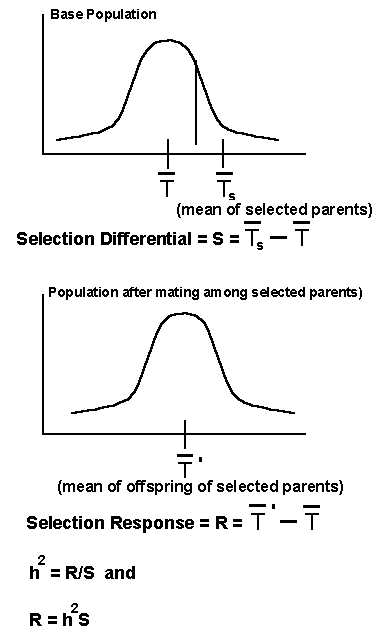Genetic and Environmental Effects
Quantitative Traits Statistics
Estimating Offspring Phenotype
Predicting Selection Response
Quantitative Genetics Overheads
Predicting Response to Selection
Another use of heritability is to determine how a population will respond to selection. Typically parents with the phenotypic value of interest are selected from a base population. These parents are crossed, and a new population is developed. The following distributions illustrate this point.

The selection differential is the difference of the base population mean and the mean of the selected parents. The selection response is how much gain you make when mating the selected parents. Remember, the narrow sense heritability is a measure of the genetic component that is contributed by the additive genetic variance. The response to selection can thus be dervied by multiply the heriability by the selection differntial. The following example illustrates how we can predict the response to selection.
The base sunflower population has a mean of 100 days to flowering. Two parents were selected that had a mean of 90 days to flowering. The quantitative trait days to flowering has a heritability of 0.2. What would be the mean of a population derived from crossing these two parents.
R = h2S
R = 0.2(90 - 100) days to flowering
R = -2 days
The new population mean would therefore be 98 days to flowering (100 days - 2 days).
Copyright © 1997. Phillip McClean